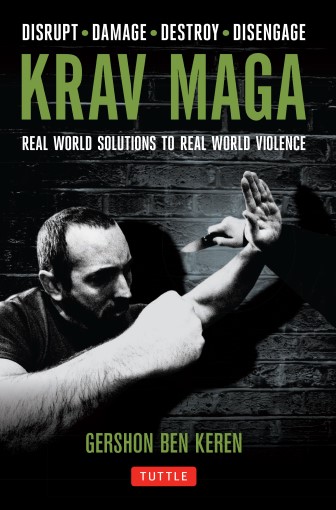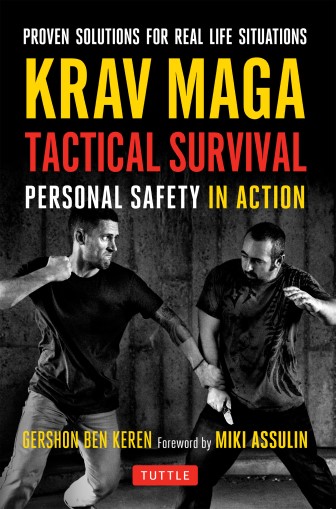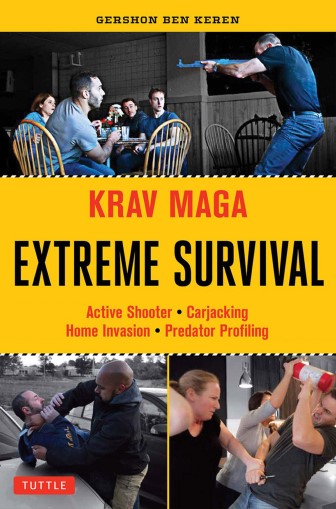Krav Maga Yashir Books
Krav Maga Books
All of the books were photographed in full color, with solutions and techniques to attacks and threats shot at full speed, in the contexts and environments where real-life violent events occurs e.g., in pubs and bars, outside of ATM's, in street settings and parking lots etc.

Krav Maga - Real World Solutions
“Krav Maga – Real World Solutions To Real World Violence” (Tuttle Press), describes the fundamental concepts and principles of Krav Maga, along with the Krav Maga Yashir approach for dealing with real-world violence. The book is divided in three sections: combatives, unarmed self-defense scenarios, and armed self-defense scenarios. The combatives sections explains the basic stances used in Krav Maga, and the different contexts when/where they would be applied. The section also deals with defenses against upper body, straight and circular attacks (both armed and unarmed), and explains/describes straight striking/punching, and movement through range (to elbows), through to grappling and throwing. The unarmed self-defensed section looks at escapes from common holds, chokes and strangulations, and responsive counters to these e.g., how to escape a guillotine choke, and then apply a clothing choke in response etc. The armed self-defense section looks at ways to deal with knife threats and attacks, and explains certain contexts where “traditional” Krav Maga responses may not be appropriate and/or effective. Solutions to a variety of gun threats, with short-barreled weapons is also looked at.
SEE ON AMAZON
Krav Maga - Tactical Survival
“Krav Maga – Tactical Survival” (Tuttle Press), although a stand-alone Krav Maga books, expands upon “Krav Maga – Real World Solutions To Real World Violence” (Tuttle Press). Organized in the same three sections: combative solutions, unarmed solutions and armed solutions, the book develops ideas that were demonstrated in the first book. The book introduces combatives, such as hammer-fist strike, head-butts, and shows why and when it is necessary to use hook punches, rather than elbows. It also shows the use of “Glisha” (meaning “sliding” in Hebrew), to add power and increase the range of front-kicks. Both the sections or armed and unarmed attacks, look at some of the ways an assailant can make defenses against some of the threats and attacks detailed in the first book more complicated and difficult, such as by grabbing controlling a limb, or clothing etc. The book largely centers around social violence, involving unplanned/spontaneous scenarios which can often be de-escalated. A straightforward method of de-escalation that is used in the security industry is detailed, along with the psychology it uses to be effective.
SEE ON AMAZON

Krav Maga - Extreme Survival
“Krav Maga – Extreme Survival” (Tuttle Press), looked at three types of extreme violence: active shooter/killer scenarios, car-jackings and home invasions. The active shooter and active killer section studied over 140 incidents, from an academic and research based perspective, along with conducting a systematic review of peer-reviewed journals, that looked at active killer incidents, including those that took place is schools, workplaces, and places of worship etc. The commonalities between these incidents as well things which were specific and unique to them, were used to create and develop the contexts within which techniques and solutions were shown and demonstrated e.g., the photographs in the section on school shootings were taken in a high school, with students demonstrating the techniques and solutions. Although, the section on car-jackings, demonstrated solutions to this type of violence, the section also explained the concepts and principles concerning fighting in confined spaces. The section on home invasions, as well as looking at physical defenses, also considered the way in which many are committed, and detailed preventable measures to stop them.
SEE ON AMAZON
